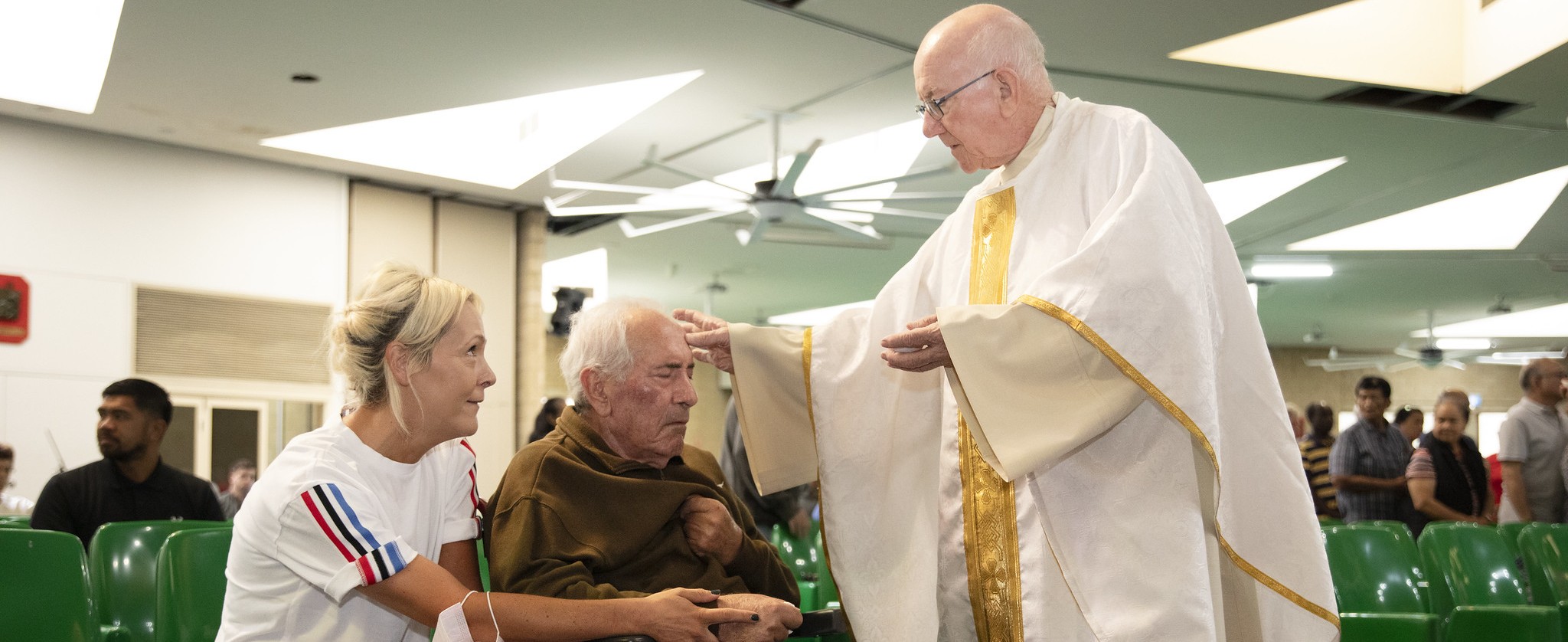Anointing the Sick- Part II
National Liturgical Council

The Pastoral Care of the Sick provides three contexts where the sacrament of the sick can be celebrated.
Anointing outside of Mass
This form can be used at home, in a hospital or other institution or perhaps in the church. The Introduction makes it clear that the priest should always inquire about the person to be anointed – about their physical and spiritual condition and should also have contact with the family and friends of the person. In that way they can be involved in the preparation for the celebration and help to choose the appropriate readings and prayers.
The address after the greeting and sprinkling with holy water is a reminder that the anointing of the sick should ideally be celebrated in the presence of family and friends and other members of the church community. As with all sacramental celebrations it is expected that there will be at least one reading from scripture and the opportunity is provided for the priest to explain the reading in the setting of ministering to the sick.
Intercessions are provided followed by the Laying on of Hands and the Anointing. In the revised rite the person is anointed on the forehead and also on the hands.
The two short prayers call for the action of the Holy Spirit to raise the person up and assure the person of the freedom available from sin in Christ. A prayer of thanksgiving follows and the rite concludes with The Lord’ Prayer unless Holy Communion is to follow. A blessing concludes this form of the rite.
Anointing Within Mass
This form of the anointing allows for a group of people to be assembled (normally in a church, but sometimes in a hospital or institution). Only those whose health is seriously impaired by sickness or old age are proper subjects for the sacrament. (PCS 108)
In some parishes people from the community bring folk from nursing homes and some who are shut-in and others who find it difficult to attend Mass regularly because of some physical disability. This provides a wonderful context in which to celebrate the Anointing of the Sick.
The action of the community in bringing together those who are infirm is a great testament of faith. The community gathered is also called upon to support those who are ill with their prayers. This Mass is also frequently celebrated in nursing homes and in hospital chapels.
In the Introduction to the Mass the priest reminds the assembly: “Christ is always present when we gather in his name; today we welcome him especially as physician and healer”.
This form provides for a special opening prayer, readings and intercessions and also a special preface as part of the Eucharistic Prayer as well as some inserts into the Eucharistic Prayer that makes specific mention of the sick present at that Mass. This celebration of the Anointing of the Sick within Mass has been very popular in pilgrimages, particularly to Lourdes.
Anointing in a Hospital or Institution
This last form is provided for those emergency situations when it is likely that only the priest and the sick person might be present. It is always desirable to celebrate the full rite but the essential parts are here in this form. If possible some members of the family or friends should be present but it often depends on circumstances.
Relationship of Anointing
Included in the three ways of celebrating the Anointing of the Sick is provision for the celebration of the Sacrament of Reconciliation. It is interesting to note that the Catechism of the Catholic Church refers to both these sacraments as the Sacraments of Healing.
Sacraments of Healing.
As we reflect on the healing miracles of Jesus in the Gospels, the forgiveness of sin is often linked to the physical curing of those who encountered Christ and sought healing from him. Most psychotherapists today would acknowledge the connection between unresolved guilt from past events and a person’s mental and emotional well being. Often such unresolved emotional trauma can be linked to a person’s physical illness. Healing can come in many ways and the church provides these sacraments to that end.
This article was originally published in ‘Healing Ministry’. © Diocese of Parramatta. 2001, 2007. Reprinted with permission.
